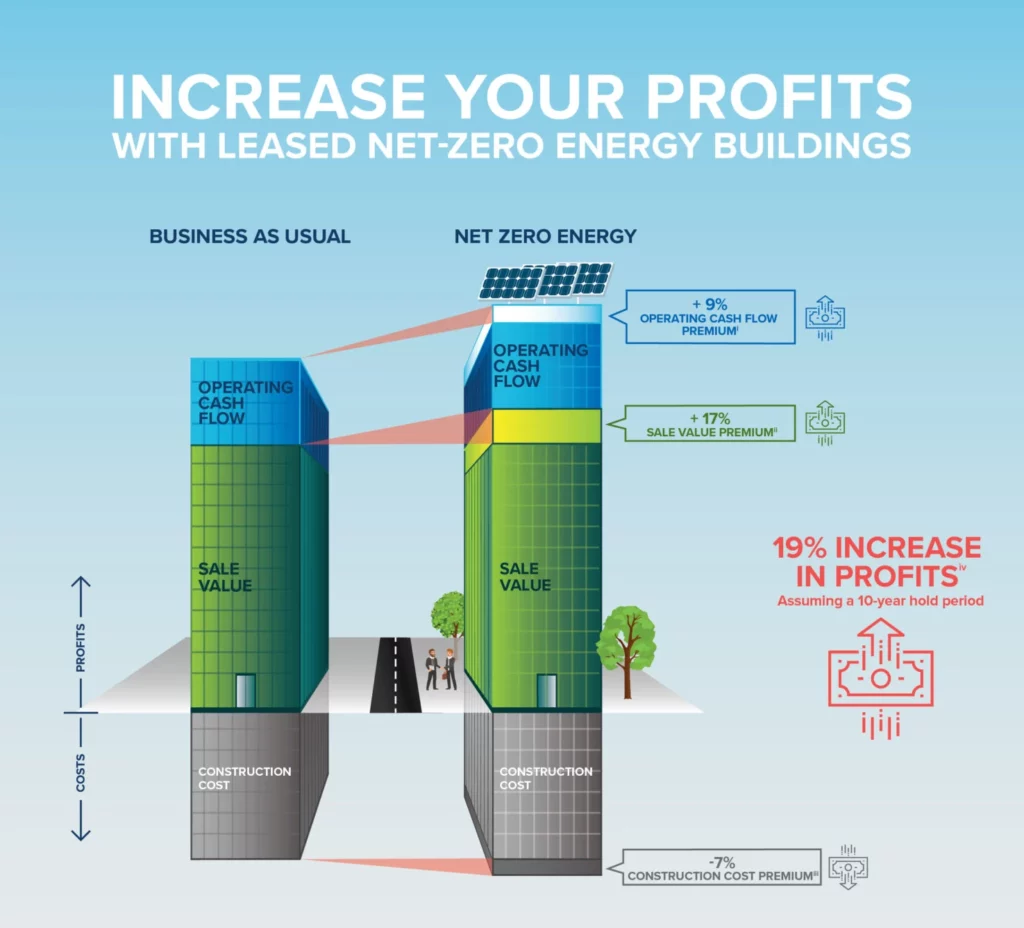
Carmichael, Cara, and Alisa Petersen. Best Practices for Leased Net-Zero Energy Buildings: An actionable guide explaining the business case and process for developers and landlords to pursue net-zero energy leased buildings. Rocky Mountain Institute, 2018.
Commercial buildings in the U.S. account for over a third of the energy consumption and nearly twenty percent of carbon emissions, and over half of non-government-owned commercial buildings are leased.
Energy usage can be systematically reduced in leased commercial buildings to make great progress toward reducing our carbon footprint. These efforts can make good business sense for developers and landlords who are considering leasing net zero energy buildings.
The Rocky Mountain Institute recently published an actionable guide to understand the business case and process for developers and landlords to pursue Net-Zero Energy leased buildings. We have provided our review of this guide along with our related experiences and best practices you may apply to the Clean Energy lifestyle.
In the V2G scenario the EV Owner charges their battery during PEAK SOLAR periods or during cheaper TIME OF USE periods when demand is low. During periods of PEAK DEMAND Owners could allow their EV batteries to act as virtual mini peaker plants, this means they discharge to the grid to offset some of the electricity purchased from expensive peaker plants and potentially putting some money in the EV Owner’s pockets.
Like building an energy-efficient home or commercial building, NZE-leased buildings provide several benefits. As the RMI guide states:
Solar can be viewed as a separate income-generating investment or could be third-party financed via PACE or PPAs, effectively removing the upfront premium. Other barriers preventing market penetration of NZE buildings are perceived technical barriers, lack of awareness, fear of trying something new, and increased attention from the developer and design team. An increasing number of examples show the market is learning how to build NZE buildings effectively, leaving leasing and other business model components as the next frontier to tackle to scale this market. This guide covers the multiple benefits that provide an attractive return on investment to a developer:
ABOUT THE ROCKY MOUNTAIN INSTITUTE – Since 1982, The Rocky Mountain Institute (RMI) has been engaged with businesses, communities, institutions, and entrepreneurs to accelerate the adoption of market-based solutions that cost-effectively shift from fossil fuels to efficiency and renewables.
Driving the clean energy movement one step at a time and making a positive impact on the environment.
The Clean Energy Life is part of the Rewire Group and is a companion site to Rewire Energy, and Rewire Digital.
Website Copyright 2023, Rewire Group LLC, DBA – The Clean Energy Life, All rights reserved.
Website Hosting and design by Rampant Imaginations